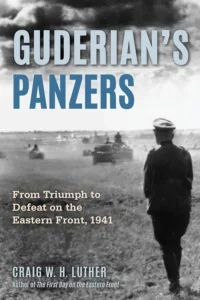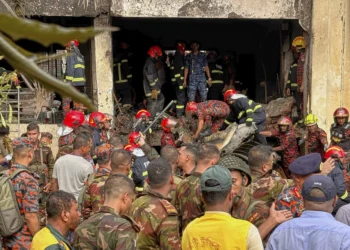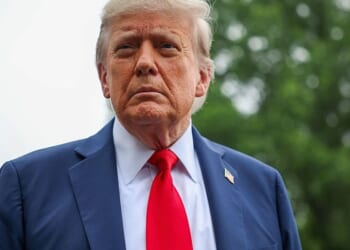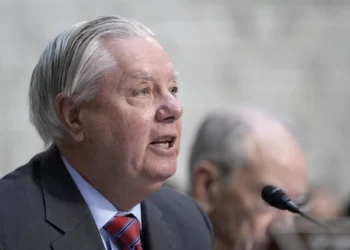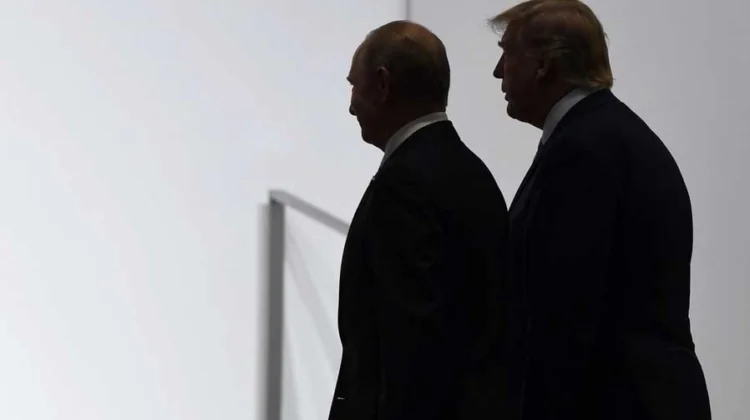
[Craving even more FPM content? Sign up for FPM+ to unlock exclusive series, virtual town-halls with our authors, and more. Click here to sign up.]
So just what was the outcome of the recent – and historic – Trump/Putin Summit at Joint Base Elmendorf–Richardson in Anchorage, Alaska? Oddly enough, we still don’t know. All that we do know is that the two world leaders talked for several hours, made brief public statements, then reboarded their respective planes and hightailed it out of town, leaving behind a bewildered world press and a plethora of unanswered questions.
In the U.S. media, the details will inevitably dribble out in dribs and drabs, colored in each case by whatever “angle” confirms the interlocutor’s biases. This is already the case, of course, with Trump-loathing “journalists” at CNN bashing the president for putting that murderous international pariah, Vladimir Putin, back on the world stage (“Trump’s getting ‘played’ once again by Putin!”), while right-leaning pundits at Fox News praised President Trump for his putative leadership and efforts to bring an end to a major European war (“at least Trump’s trying to do something, while Biden never even picked up the phone to call Putin!”).
Thus have the domestic battle lines been drawn: full disclosure, I lean toward the latter perspective. Yet as a historian who has spent all of this century studying conflict in this uniquely violent corner of the world (eastern Europe), I will try to lay out my thoughts with all the objectivity I can muster.
Let me begin by pointing out that the western narrative on most everything from Putin’s health to the status of the Russo-Ukraine war is often little more than gaslighting. Perhaps you think I just violated the pledge I made directly above, but consider: For years we’ve been assured that Putin is sick, he’s even dying; he has cancer or some other dreadful malady. And, yet, after all this time, he’s still here, and he looked vigorous and athletic as he walked down the red carpet to shake hands with President Trump. So scratch that little fairytale. We’re also told that endless rounds of sanctions are bringing Russia to its knees, but somehow it has managed since February 2022 to transition to something close to a total war footing, producing more drones, tanks, artillery, missiles and munitions than the U.S. and all other NATO countries combined.
Most significantly, Russia is not losing on the battlefield; indeed, by almost every metric—numbers of men and matériel, personnel/equipment losses, ground captured, tactical (and now even operational) success—Russia is winning and Ukraine is losing. And no, Russia is not running out of fighting men (I heard this fantastical fairytale again today); in fact, the Russian military is recruiting some 35-40,000 men each month, while losing perhaps 20,000 a month on the battlefield (a net gain of 15-20,000 a month). Compare that situation to Ukraine, which is so desperate for warm bodies it is kidnapping middle-aged men, giving them a few weeks of training (if that), and sending them to the front to die (often within a few hours).
So it is no wonder Putin came to the summit brimming with confidence. Moreover, in just the past week or so, the military situation in Ukraine has taken a dramatic turn in Russia’s favor: the relatively static geometry of the front has finally begun to crack with Russian ground forces making major territorial gains (at least in the context of this war) and forcing the AFU (Armed Forces of Ukraine) into their most alarming operational crisis since the start of Russia’s Special Military Operation (SMO) in February 2022.
Russian forces have broken through north of the town of Pokrovsk, a vital logistics and communications hub in the Donetsk region of the Donbas that now faces imminent encirclement. In other key sectors of the 1200 kilometer front (e.g., around Kostyantynivka, Lyman, and, far to the north, around Kupyansk) the situation also looks grim for Ukraine. At the root of the AFU’s deteriorating position is its growing shortage of combat infantry. In fact, Ukraine’s manpower crisis is now so severe that it lacks the troops to hold anything resembling a contiguous front line against mounting Russian pressure. As a historian of the eastern front in World War II, I am intrigued by how much Ukraine’s current manpower situation echos that of the German Wehrmacht in Soviet Russia in 1943/44. Like Ukraine currently, Nazi Germany’s eastern armies suffered from a staggering shortage of infantry, resulting in their inevitable defeat.
Due to the inevitable “fog of war”—in this case, the constant media gaslighting and the highly disparate estimates of so-called military experts—it is impossible to accurately determine either Ukraine’s or Russia’s total personnel losses over the past three-and-one-half years; figures for the AFU range from several hundred thousand to well over a million irrecoverable losses. What is certain, however, is that most of the losses on both sides are combat infantry.
As noted, however, the armed forces committed by Putin to his Special Military Operation have only grown in size, while the Russians continue to adeptly adjust their tactics to the realities of 21st Century warfare, including the virtually omnipresent use of unmanned vehicles for both attack and battlefield reconnaissance and, in general, the unprecedented use of sophisticated intelligence, surveillance, and reconnaissance (ISR) tools that have made this war the most transparent in history. Above the battlefield, Russian air forces reign supreme. All of which (and more) makes Ukrainian President Volodymyr Zelensky’s refusal to back off from his maximalist goals, which include the return of every meter of territory seized by Russia, including the Crimea, little more than a tragic farce. For by refusing to budge, Zelensky may be forfeiting his final opportunity to end this war without a complete collapse of not only his sagging military defenses but of his country as well.
So if my analysis is accurate, what does it tell us about Putin’s thinking and behavoir at yesterday’s historical summit meeting? It tells us that he sat down for his discussions with Trump in a solid strategic position. Yes, the threat of addition sanctions (primary and secondary) is of concern to the Russian leader, but he has weathered a blizzard of U.S./NATO sanctions to date, and with the support of China, India, Iran, and others he will likely continue to do so; more to the point, with his armies beginning to dominate the battlefield, they are building relentlessly on a situation that began to manifest in the wake of Ukraine’s disastrous summer offensive of 2023.
Thus, one doesn’t have to be a Kissinger or a Metternich to conclude that, while Putin may have made a “good faith” gesture or two (perhaps in the furtherance of U.S.-Russian bilateral relations), he conceded nothing that might have adversely affected conditions on the battlefield. Final victory, Putin knows, may lurk just round the corner—as in, the end came slowly, then all at once—and his primary concern now (or one of them at least) is not to push that victory too hard and/or too fast, thereby risking a potential NATO intervention on the ground, in particular by the U.K., whose leadership seems to have lost their minds over this war.
Putin’s strategic position is also buttressed by his continued popularity at home. Indeed, unlike the war in Afghanistan of the 1980s, which quickly became unpopular among the then-Soviet peoples, the war in Ukraine is considered a proxy war on the part of a hostile NATO and U.S. aimed at the very existence of the Russian Federation: And in this, Putin and his people are largely of one mind. More importantly for Putin, his entire legacy (and perhaps his personal well being) hinges on a successful outcome to the war, whatever shape that may take.
Then where does this leave us? It leaves us essentially where we were on August 14, 2025. What we know so far is that the meeting was relatively cordial (according to some accounts, Trump got somewhat angry at the end, with the wily Putin who knows Trump only too well, careful to beguile and cajole our Commander-in-Chief while giving nothing at all away. And although Trump sounded upbeat after the summit, it seems likely that no progress was made on the war, and I doubt the vital issue of a potential ceasefire was even addressed. (Update: There has been speculation in the press about Trump and Putin reaching a “tentative peace agreement.” However, it would come at the expense of Ukraine ceding the Donbas to Russia, a non-starter for Zelensky.)
Perhaps the one positive result from the summit is that—given Putin’s invitation to Trump to visit Moscow—the discussions may go on. And if somehow, someway, future negotiations lead to a lasting peace, this initial summit just may have launched the start of that process. But that’s a tall order. For one thing, the Russian leader justifiably has bitter memories of negotiations with the western powers that took place from 2014/15 (the Minsk negotiations in Belarus) right up to the start of Putin’s SMO in February 2024, and which were not always conducted in good faith by western interlocutors. Thus, Putin most likely suffers from a trust deficit that will have to be overcome before any negotiations can bear lasting fruit.
In the interim, Russians and Ukrainians will continue their hideous war, with both Putin and Zelensky obsessively pursuing their maximalist (albeit mutually exclusive) objectives; and they will do so until the Dnepr runs red with blood. Because as my years of study have taught me, the eastern Europeans are simply not like us: They never got the message that “war is never the answer;” that it is no longer a legitimate instrument of national policy.
Where this leaves Mr. Trump in his seemingly sincere efforts to negotiate an end to the war is unclear. What is clear, however, is that any attempt to forge a just and lasting peace between such martial peoples may well signify the greatest challenge of Trump’s political life.
Craig W. H. Luther is a former Fulbright Scholar and a retired U.S. Air Force historian. His new book is
